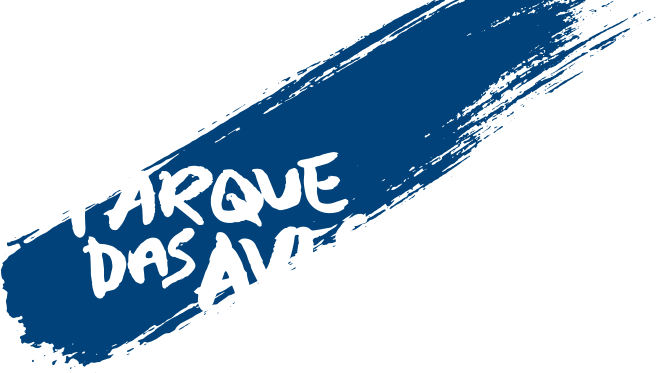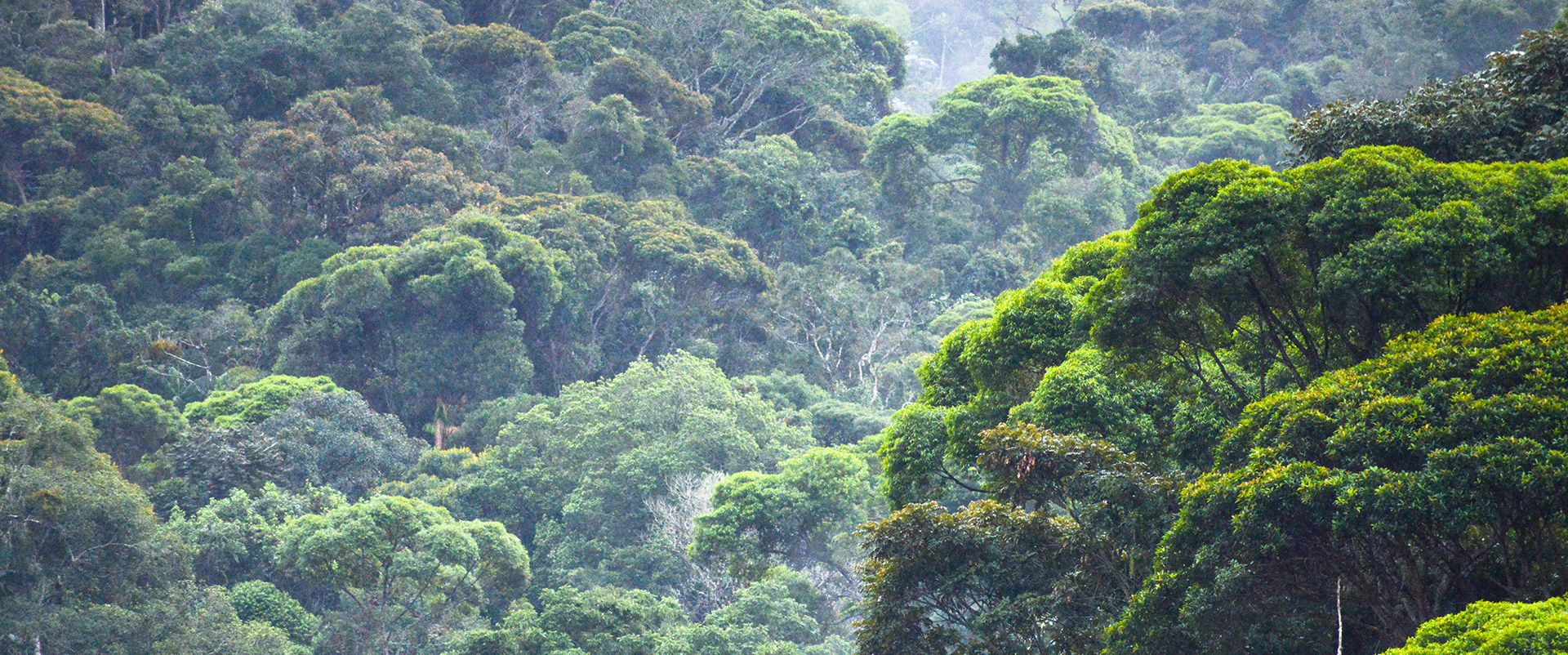
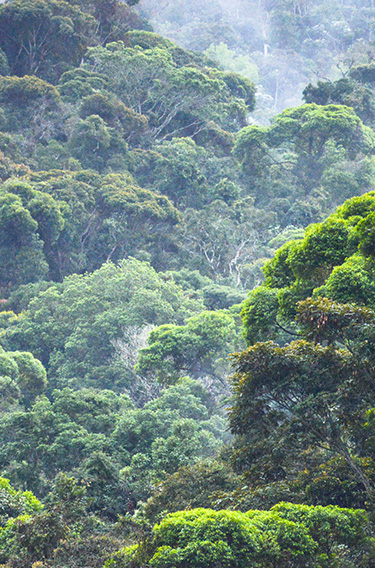

ENVIRONMENTAL EDUCATION
AND SOCIAL SCIENCE
We have a qualified team for the development of research and solid based actions for community engagement and education for conservation.
Parque das Aves as an Integrated Conservation Center of Atlantic Rainforest Species develops actions of research, conservation, leisure, and education, contributing to the connection of its visitors with nature. Believing that education is essential in the species conservation process, the institution has the Environmental Education Department that aims to contribute to the connection of the visitors with the Atlantic Rainforest in order to allow their engagement and changes in attitudes. The team of educators and environmental mediators develops activities for various publics always with a theoretical foundation of critical environmental education and of Social Sciences, resulting in a strong integration between research, theory, and practice in the field of education.
Parque das Aves receives 830,000 visitors per year, and among them is an average of 30,000 students from school groups entering into special programs of environmental education, which are free for public schools in the region.
We develop conservation education and communication programs based on research and we measure the impact of the experience at Parque das Aves, its education programs, and its communication.
In addition to the programs at Parque das Aves, we also develop or support environmental education and engagement of local communities in various ways in several Brazilian states.
In this section of our website you can read more about cases of using Social Sciences for evidence-based actions as well as giving support to educational initiatives linked to our partner projects. Learn more about our work at Education for Conservation.
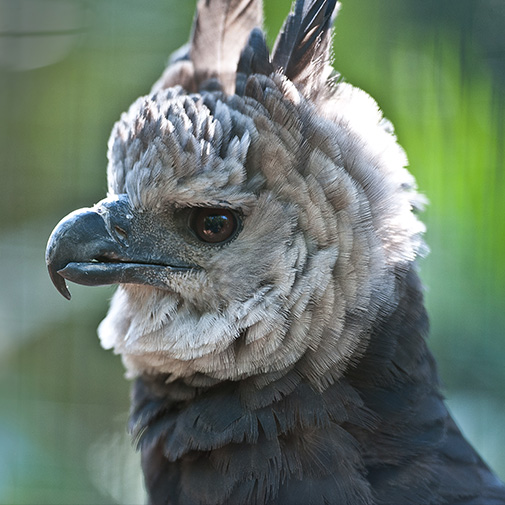
 |
ENVIRONMENTAL EDUCATION |

We have a qualified team for the development of research and solid based actions for community engagement and education for conservation.
Parque das Aves as an Integrated Conservation Center of Atlantic Rainforest Species develops actions of research, conservation, leisure, and education, contributing to the connection of its visitors with nature. Believing that education is essential in the species conservation process, the institution has the Environmental Education Department that aims to contribute to the connection of the visitors with the Atlantic Rainforest in order to allow their engagement and changes in attitudes. The team of educators and environmental mediators develops activities for various publics always with a theoretical foundation of critical environmental education and of Social Sciences, resulting in a strong integration between research, theory, and practice in the field of education.
Parque das Aves receives 830,000 visitors per year, and among them is an average of 30,000 students from school groups entering into special programs of environmental education, which are free for public schools in the region.
We develop conservation education and communication programs based on research and we measure the impact of the experience at Parque das Aves, its education programs, and its communication.
In addition to the programs at Parque das Aves, we also develop or support environmental education and engagement of local communities in various ways in several Brazilian states.
In this section of our website you can read more about cases of using Social Sciences for evidence-based actions as well as giving support to educational initiatives linked to our partner projects. Learn more about our work at Education for Conservation.
Case: SOS Fauna – multiplying knowledge and engagement with the Iguaçú National Park
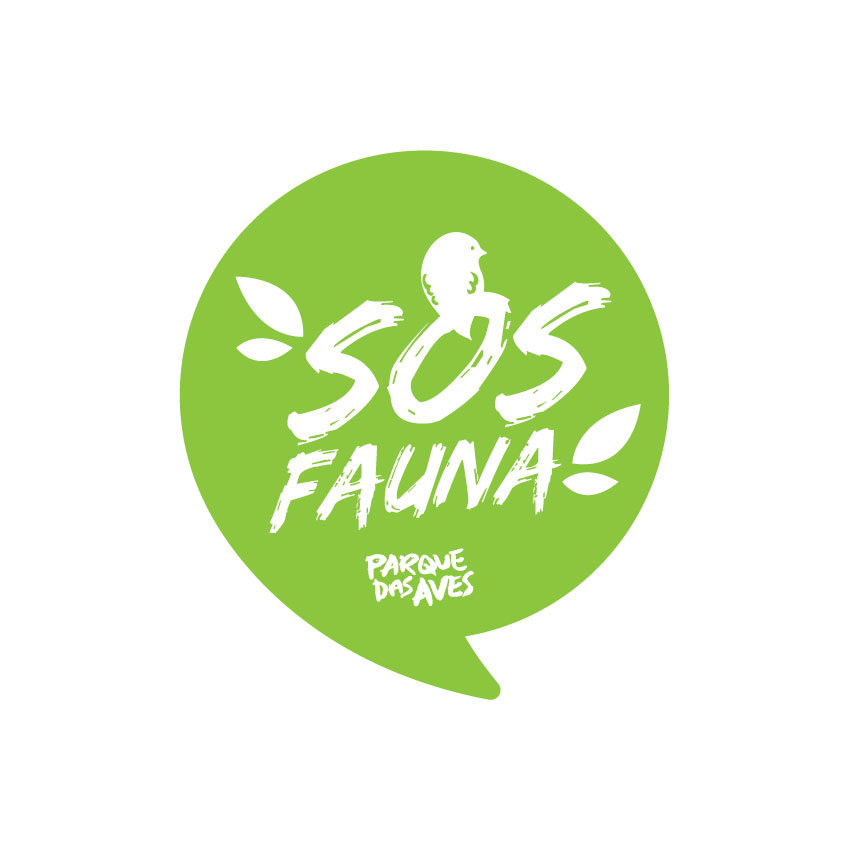
SOS Fauna works with teachers from various disciplines through a 1-year course to multiply knowledge about local wildlife and conservation. During this period, teachers develop various materials to teach conservation of biodiversity for hundreds of students per year.
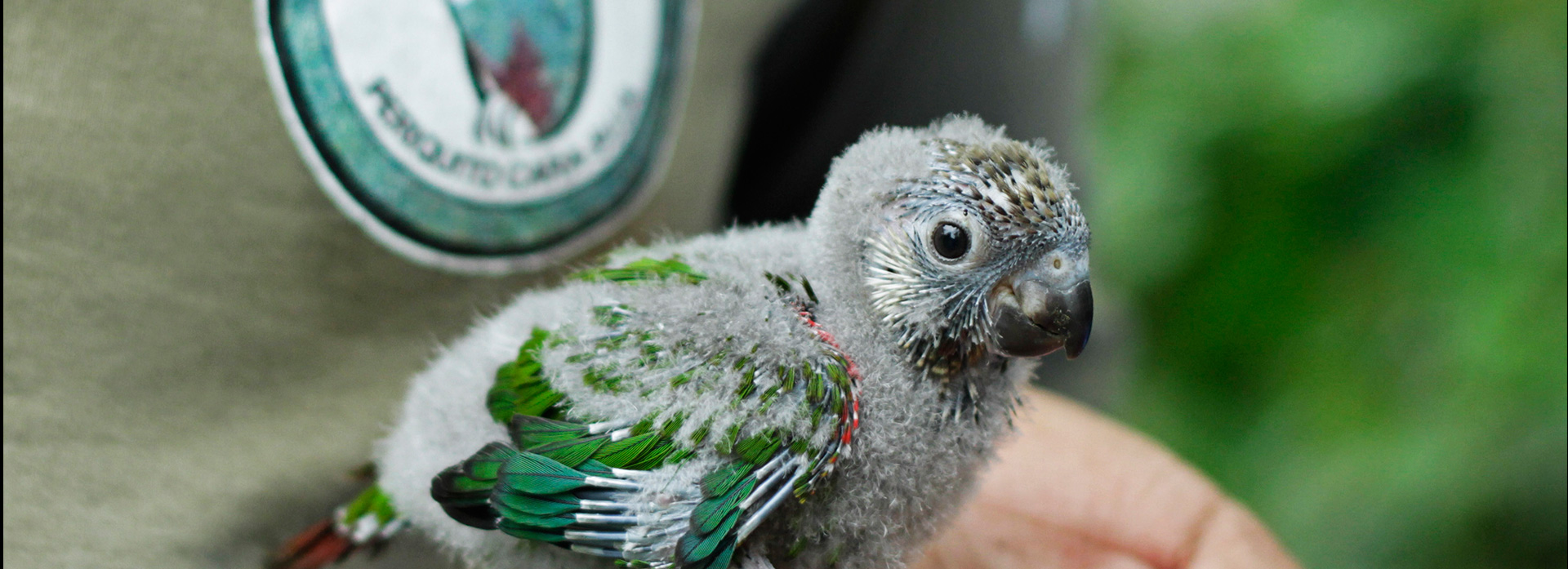
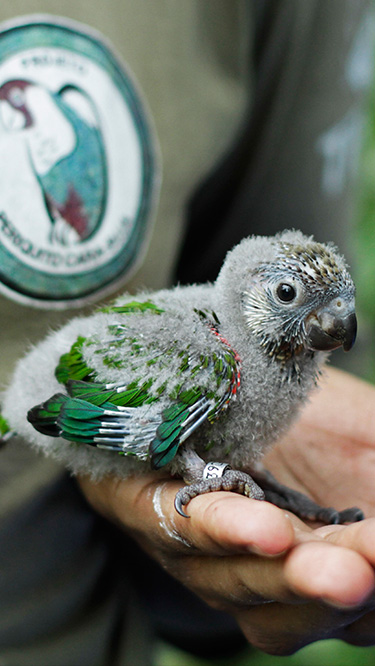
Through the training of teachers and guided tours for schools, SOS Fauna is designed to increase the knowledge of children about the Atlantic Rainforest, including the threats it faces and realistic solutions to mitigate these threats. Twelve schools from the city of Foz do Iguaçu, which is where Parque das Aves is located, participate in the program, which includes two visits: one to the Iguaçú National Park and one to Parque das Aves. An evaluation before and after the program’s impact shows that the SOS Fauna program had a positive influence on students’ knowledge about the Atlantic Rainforest, its threats of conservation, and local conservation solutions. For example, prior to participation in the program, the garbage was considered by children as being the biggest threat to the National Park. After the program, the relative emphasis changed to concentrate on more serious threats such as deforestation, illegal hunting and fishing, as well as animal trafficking. In terms of conservation solutions, there has been a shift in emphasis from anti-trash solutions (e.g. garbage bins) to actions to combat the negative impact of deforestation by interrupting deforestation or reforestation, as well as measures to stop or report illegal hunting, and encourage the preservation.
Case: Red-spectacled Amazon Parrot Project – support to foster local engagement
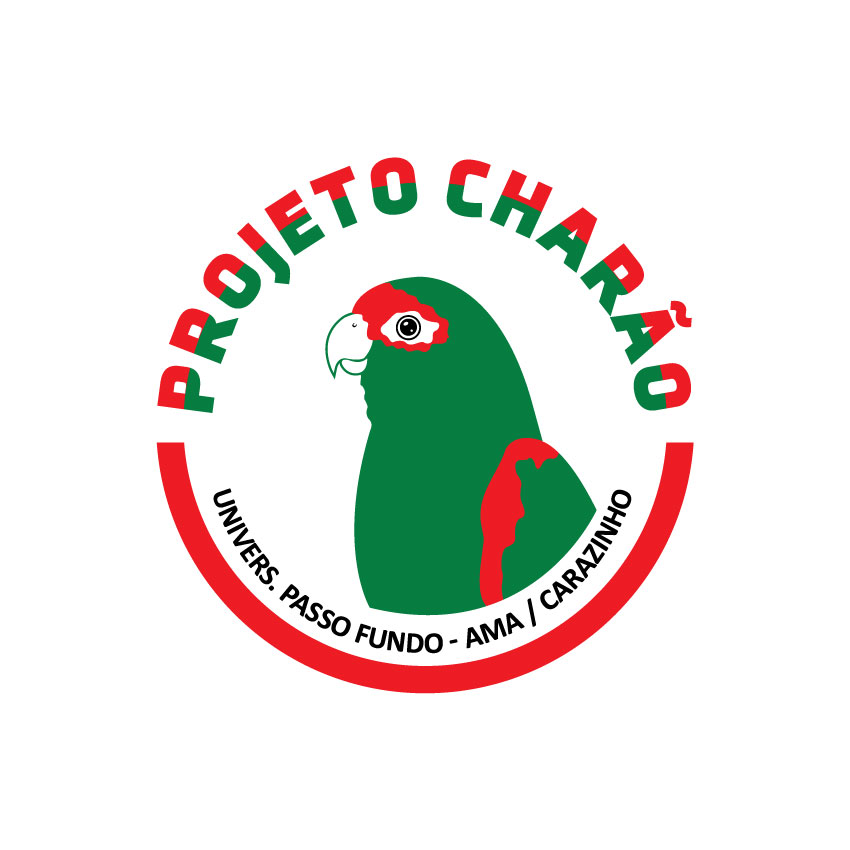
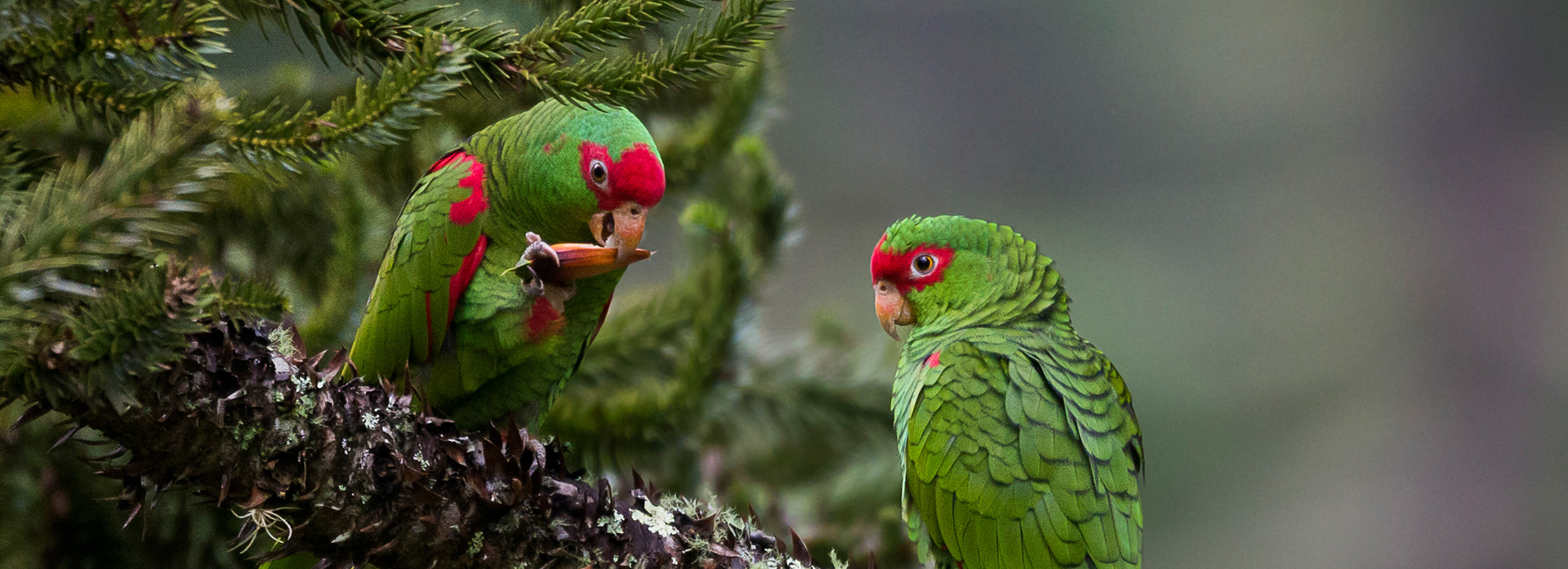
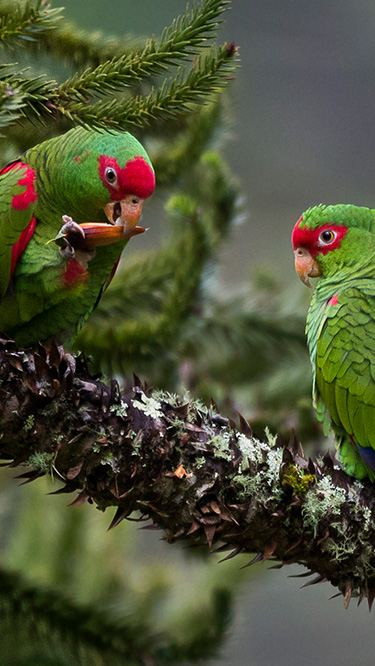
The red-spectacled Amazon parrot (Amazona pretrei) is found only in the states of Santa Catarina and Rio Grande do Sul with some sightings in Argentina and one historical record in Paraguay. The geographic distribution of the species is strongly associated to environments with the occurrence of Araucaria forests, which is a natural vegetation in Southern Brazil whose occurrence is between the altitudes of 500 to 2,300 meters. The red-spectacled amazon parrot has been classified by IUCN as Vulnerable (VU) since 2000, and although it has already been in a more serious category of threat between the years 1994 and 1996 when it was considered endangered (EN), it still has a downward population trend according to IUCN. Historically, the main factor of the population decline of the red-spectacled amazon parrot was the great destruction of the Araucaria forests due to logging, which in Rio Grande do Sul, had its climax between the decades of 1910 and 1940. The second factor of threat is the capture of its offspring from the nests to serve as pets, a fact that was still common in the main regions of reproduction of the species.
For almost three decades, practically the entire population of the species comes together every year between the months of May and June in the municipalities of Painel and Urupema (Serra Catarinense region) to enjoy the food provided by the Araucaria forests. This behavioral pattern of the species of meeting in a large common flock facilitates taking an annual census, which since 1995 allows the monitoring of the size of the world population of this species. In 1991, the Association of Friends of the Environment (AMA) created in the region of Passo Fundo and Carazinho in Rio Grande do Sul, the Red-spectacled Amazon Parrot Project, an environmental research and education program focused on the preservation of wildlife, which carries out research in the areas of biology, ecology, and behavior of the Red-spectacled Amazon Parrot in its natural environment in the states of Rio Grande do Sul and Santa Catarina. So after almost three decades, the Project has already gathered a lot of information about the biology of the species that made it possible to apply different conservation strategies that minimized the strong impacts on the species, which has been reduced to a population of approximately 19,000 individuals today. Conservation measures to avoid the population decline of the red-spectacled amazon parrot are mainly represented by educational actions for the preservation of remaining native forests in which the bird has found nesting and feeding conditions, in incentive programs for forestry replanting, especially with the native species that provide nesting environments for the parrots and provide them with some food, such as the araucaria. A highlight was the creation in April 2018 of the Private Reserve of National Resources (RPPN) Papagaios de Altitude.
In November 2018, CPSG provided a workshop for applying the IUCN SSC guidelines about using ex situ management for the conservation of the species of parrots included in the National Action Plan for the Conservation of Parrots headed up by ICMBio. Learn more about this workshop.
Parque das Aves offers financial support for setting up the infrastructure that will serve as the operational base of the RPPN in Urupema, Santa Catarina. This physical structure will make it possible to extend and increase the effectiveness of the field research with the species, as well as to increase the educational actions with the local community or with the tourists who visit the region during the winter.
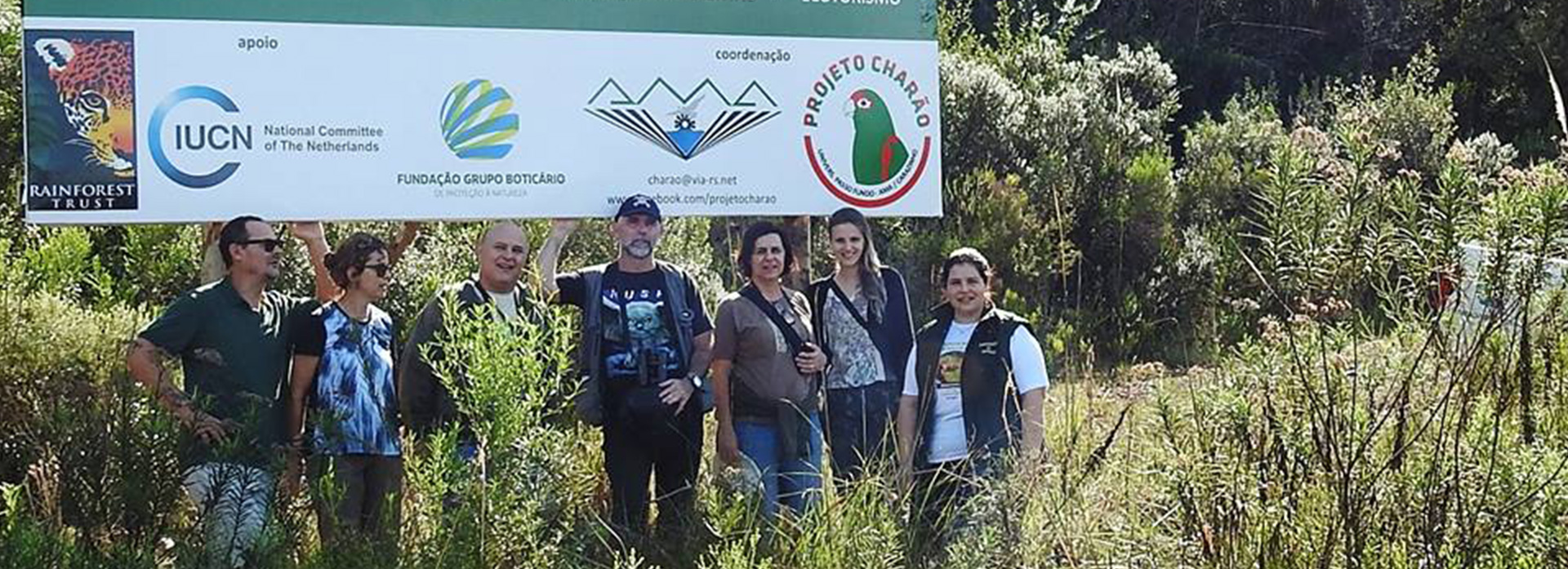
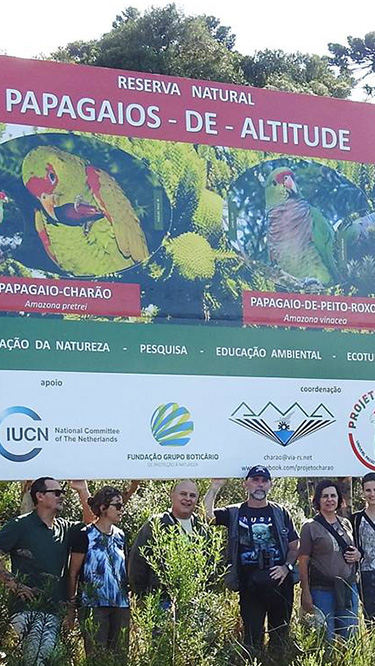
Parrots at the Gramadão Square – citizen awareness in the city of Foz do Iguaçu
Gramadão Square has 8,000 m2 and is located in the residential neighborhood of Vila A in Foz do Iguaçu. It is a place of frequent leisure for the local population. Estimated at more than 258,000 inhabitants, it is believed that a large part of the population of Foz do Iguaçu views this area as one of the main outdoor spaces for recreation in the city, including some large events performed on structures for shows available at the site.
In 2018, the Parque das Aves Conservation Nucleus identified in this area of the Gramadão a set of a dozen eucalyptus trees that provide an environment of nocturnal dormitory for a group of blue-fronted Amazon parrots (Amazona aestiva). It was discovered that at the end of every day, individuals of blue-fronted Amazon parrots came in pairs from different directions to stay overnight in the few trees existing there. In the same way, these birds dispersed in the early hours of the following morning. Once this site was identified, a monitoring was started twice a month of the number of animals that used that location. This monitoring was of an unprecedented character because even though the population knew for some decades that this was a place frequented by many birds, no records were found for monitoring the number of animals present there until the moment. So, since July 2018, 14 censuses have been recorded with an average of three distinct points of sampling each time. This monitoring has used an average of 10 employees from Parque das Aves with about 3 to 4 people at a time. An event, however, that deserves to be highlighted is the participation of approximately 50 employees on one occasion in which professionals from different areas of the Park had the opportunity to voluntarily get to know an activity of in situ population monitoring.
Until now, the maximum number of parrots recorded has been 406 individuals on March 21, 2019. In addition, in August 2018, a reduction in the total number of individuals was observed, which is probably related to the beginning of the reproductive season of the species when the couples remain during the greater part of the day in the nests so they do not return to their dormitory.
The participation of Parque das Aves in this activity goes beyond the scientific context because it promotes a greater approximation with the community of Foz do Iguaçu, favoring a better diffusion of our commitment to the conservation of biodiversity, an even more essential issue when it comes to the most trafficked bird species in the country. By seeking partnerships with the Vila A Residents Association and with biology and veterinary medicine students at the União Dinâmica University Center (UDC), the tendency is to strengthen our efforts to better connect the local community with the nature that surrounds us. Aware that families who have positive attitudes with nature are more prone to perform outdoor activities with children and this way prod them into aspects of conservation, we noticed the importance of our educational actions in creating experiences involving families that promote dialog between generations so that together they can change behaviors and attitudes. The citizen science methodology is our main tool, which consists in a theoretical-methodological path that contributes to both producing knowledge about a particular phenomenon along with enabling engagement and involvement of volunteers in favor of the educational action. Thus, the objective is to contribute to increasing the information about the species, as well as to discuss the issue that involves the conservation of this species and other environmental elements related to it with the local population, building engagement by the community members.
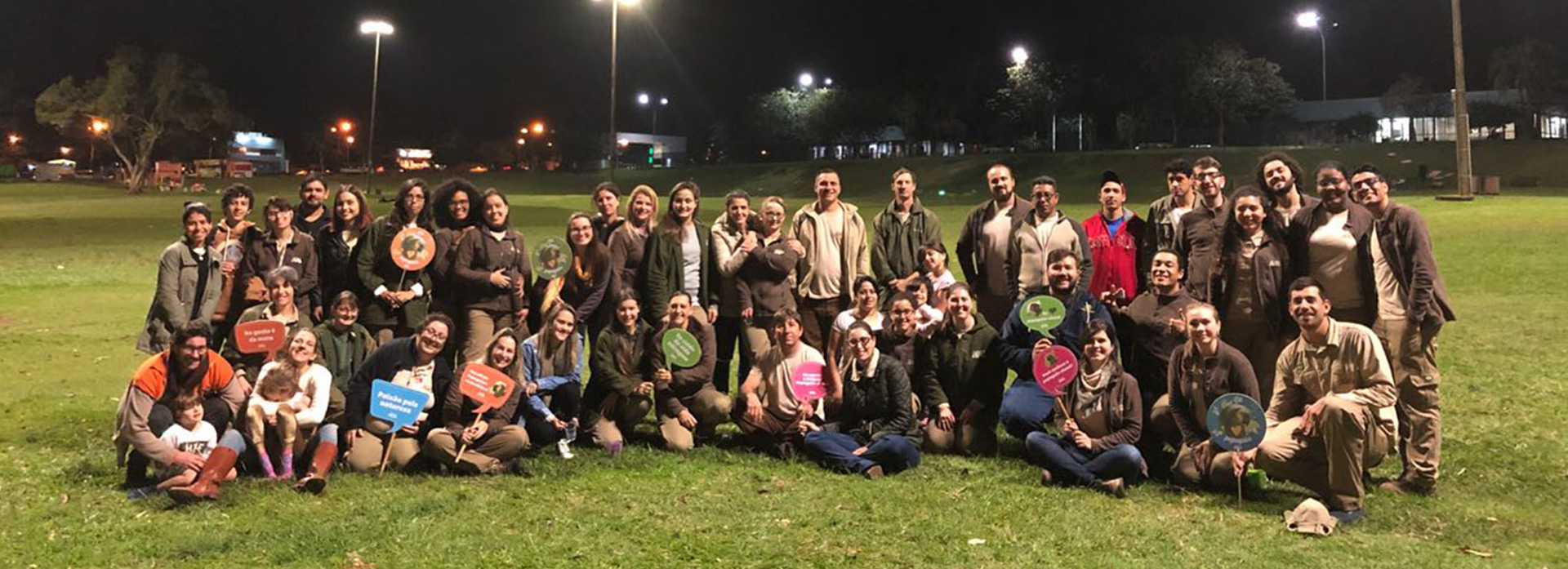
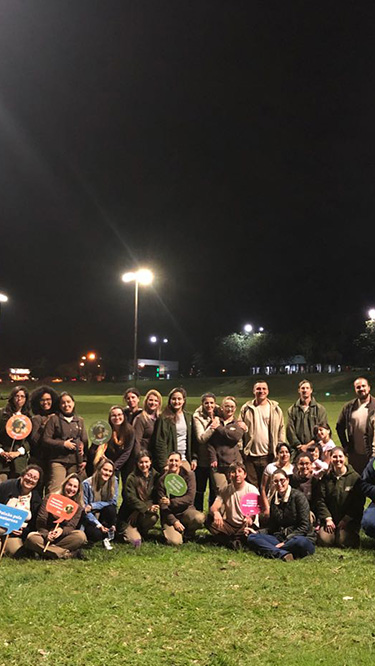
To book a school visit, click here.
To get in touch with our team, send an e-mail to [email protected]
Learn more about our work in Education for Conservation.
Navegue no menu ao lado e saiba mais sobre ações para recuperar espécies
Navegue pelo menu abaixo
- SOS Fauna
- Projeto Charão
- Papagaio do Gramadão
 Every day from 8:30am to 5:30pm
Every day from 8:30am to 5:30pm Prices
Prices


